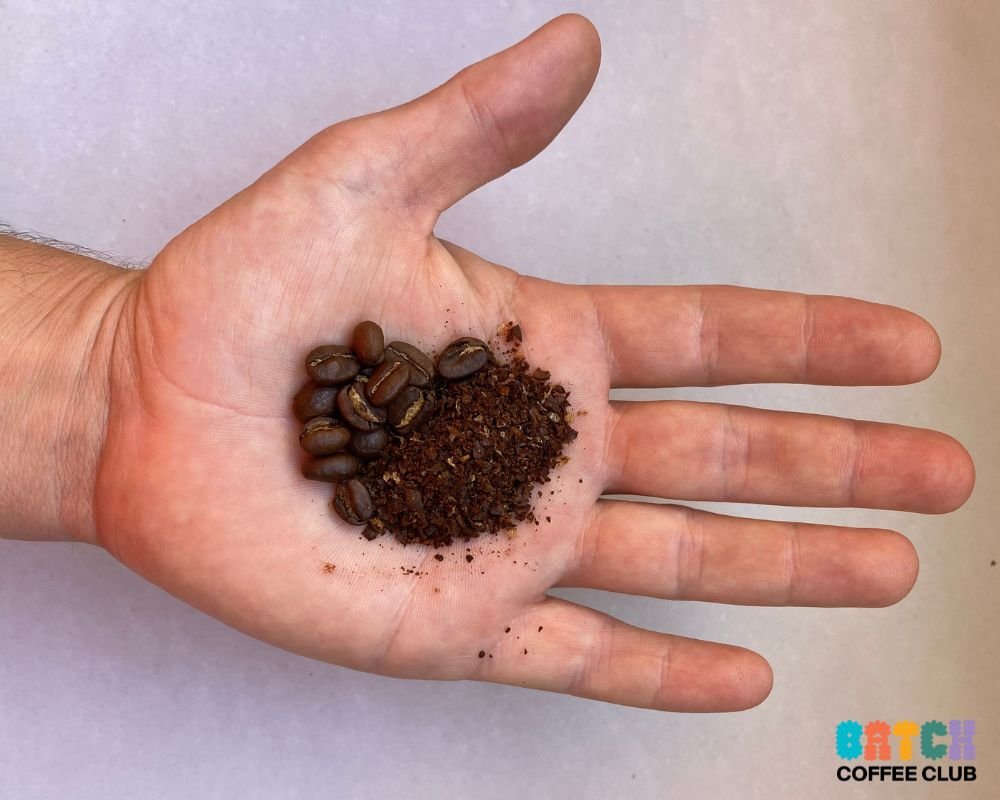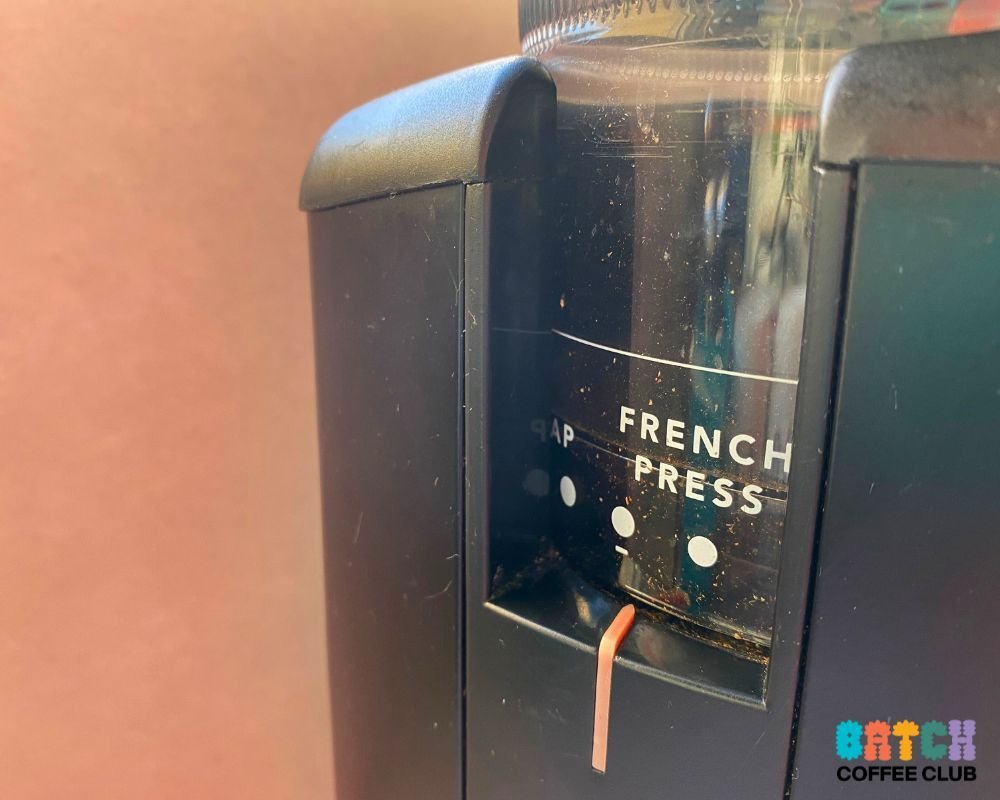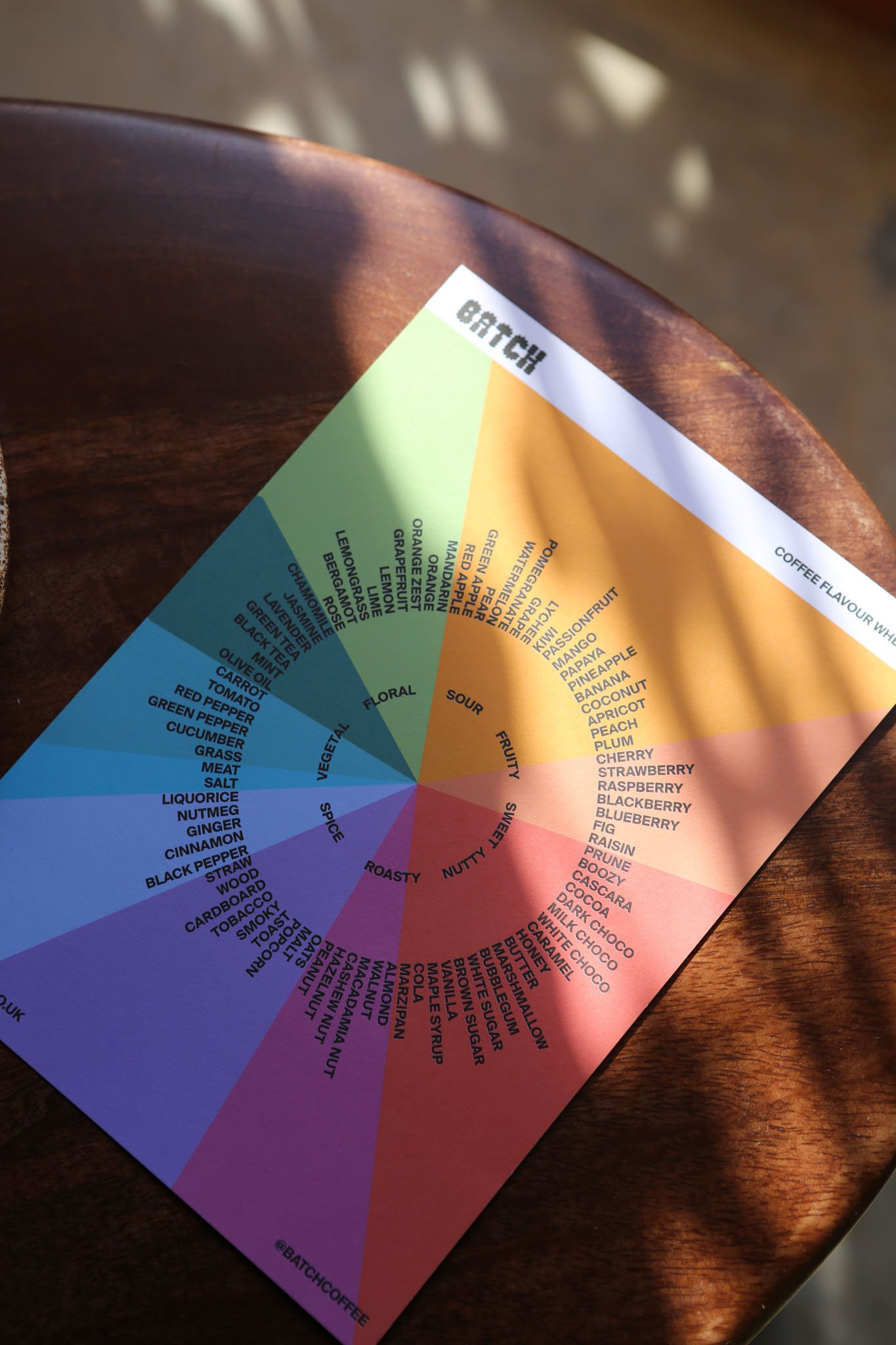Cafetiere Grind Size
To Brew Delicious, Balanced Coffee
Not all brew methods require the same grind size.
Well with many years of experience and hundreds of plunges under our belt we can guide you through what we think is the best grind size for cafetiere coffee.
Stop Making Bitter Cafetière Coffee
Since you’re researching cafetières, you obviously care about good coffee.
My 5-day course ensures you get the most from whatever cafetière you choose.
AUTHOR: TOM SAXON
Why trust me
I’m Tom and I have been working in the coffee industry for over 10 years, starting my journey as a barista in Australia, working on coffee farms in South America and roasting coffee in The UK.
Today I review and write about speciality coffee.
I am the author of The Home Barista and the founder of Batch Coffee Club, which showcases the very best coffee from around the world.
What is cafetiere grind?
The short answer…
Cafetiere grind size is medium to coarse (more on the coarse side than the medium) ground coffee that when brewed under the correct variables will produce a well-balanced and delicious cup of cafetiere coffee.
The slightly longer answer…
When brewing any method of coffee there are always a number of variables that when optimised will brew the best possible coffee.
To name a few:
- Dose (volume of coffee)
- Water Volume
- Water Temperature
- Agitation
- Brew Time
- Water pressure
- Roast type
- Origin
- Coffee Processing method
- … and of course Grind Size
One of the variables that we can fairly easily tweak or at least whoever you buy the coffee from is the grind size.
Cafetiere coffee requires one of the coarsest grind sizes out of all of the brew methods.
This is because cafetiere, french press, or plunger coffee (whichever you prefer) is an immersive brew method where the coffee is brewed for a particular amount of time sitting in the water.
Therefore the surface area of the overall volume of coffee needs to be fairly small (in other words coarsely ground coffee).
The best description of a cafetiere coffee grind size is like ground pepper corn, which is fairly coarse to touch.
Another observation that I find when grinding coffee for a cafetiere is that when you touch the coffee grounds, very few grounds stick to your fingers as opposed to finer ground coffee that is more powdery and stays on your hands.

It is sometimes quite hard to describe the setting on coffee grinders if you wish to grind coffee for cafetiere.
This is because each grinder is different and has slightly different settings.

If you have a burr coffee grinder then there are usually numbers (and sometimes descriptions of the brew method) where you adjust the coarseness of the grind.

Opt for higher numbers, but not the highest.
If you own a blade coffee grinder, then it is even harder to give you an answer.
However, grind your coffee long enough that you find no large chunks of coffee in the grounds but when you touch the grounds not much sticks to your fingers.
What coffee grind do I use for a French press?
The best coffee grind for cafetiere is a medium-coarse/coarse grind size.
If you are buying pre ground coffee then look out for labels such as ‘cafetiere’,’french press’, ‘plunger/percolator’ ‘coarse grind’.
If you are grinding the coffee yourself opt for a coarse grind size on your grinder. If you’d like to see how French Press compares to other brew methods checkout our Grind Size Chart.
Should I grind my coffee coarse or fine for cafetiere?
You should grind your coffee coarse for a cafetiere, the level of coarseness is up to your discretion and should be something that you tweak over time.
You should find a level of coarseness that you think is suitable for a cafetiere and brew the coffee.
You should then taste and review whether it is well balanced and delicious (if so you are bang on with that French Press grind size), sour and under extracted (therefore next time make the grind finer) or bitter and over extracted (next time make the grind coarser).
What happens if I use fine ground coffee in a cafetiere/french press?
There are a few things that will happen if you use fine ground coffee in a cafetiere.
Firstly let’s talk taste:
If you manage to brew your finely ground coffee in a cafetiere then the overall surface of the coffee is much larger than needed, this will mean the water is essentially extracting too much of the coffee grounds and you will end up with an over extracted brew.
This will taste unbalanced and most likely bitter.
Secondly the practicality of brewing fine ground coffee in a cafetiere is also an issue.
As the grinds are so fine, they will be suspended in the brew water rather than sinking to the bottom.
They also will lodge inside the mesh filter.
Both of these combined will make it really tough to plunge and you will find quite a lot of coffee grounds in your cup.
If you’re desperate and you only have finely ground coffee for your cafetiere then I would recommend brewing less than usual and not agitating the coffee once you have started brewing to let as much of the grounds sink to the bottom as possible.
How much ground coffee for a cafetiere?
The general rule of thumb for making coffee in a cafetiere is to use a ratio of 1:15 or 1:16, coffee to water.
This means for every 1 gram of coffee, you will need 15-16 grams of water.
So, for a standard 8-cup (34-ounce/1 litre) cafetiere, you would need around 56-60 grams (or 8-9 tablespoons) of ground coffee.
Of course, the strength and taste of the coffee can be adjusted to personal preference, so feel free to adjust the amount of coffee to your liking.
What is the difference between filter grind and cafetiere grind size?
The main difference between filter and cafetiere grind is the size of the coffee grounds.
Filter grind is a finer grind of coffee that is used for drip coffee makers or pour-over methods, where the coffee is extracted through a paper filter.
The finer grind allows for a slower extraction time, resulting in a smoother, less bitter cup of coffee.
On the other hand, cafetiere or French press grind is a coarser grind that is used for coffee brewed in a French press or cafetiere.
The coarser grind allows for a quicker extraction time, which is necessary to prevent over-extraction and bitterness in the coffee. Additionally, the larger plunger grind size prevents the coffee from passing through the mesh filter of the French press.
Overall, the main difference between filter grind and cafetiere grind is the size of the grounds, which is chosen based on the brewing method and the required extraction time.
Is filter grind OK for French press?
While it is possible to use a filter grind size for cafetiere, it is not recommended.
The reason is that a filter grind is much finer than a French press grind.
When using a French press, the coarser grind allows the coffee to be extracted slowly, resulting in a rich, full-bodied cup of coffee.
However, if you use a filter grind, the coffee will extract too quickly and may result in an over-extracted, bitter cup of coffee.
In addition, the finer grind of a filter grind can also cause problems with the mesh filter of the French press, clogging it and making it difficult to plunge.
Therefore, it is best to use a coarser grind size for cafetiere coffee to achieve the best results.
Checkout our articles on Filter coffee grind size and Aeropress grind size.
Is cafetiere same as French press?
Yes, cafetiere and French press are two different names for the same coffee brewing device.
A manual coffee brewing method that was invented in France in the 1850s.
It consists of a cylindrical glass or stainless steel carafe with a plunger and a metal or nylon mesh filter.
To brew coffee in a Cafetiere, coffee grounds are added to the carafe, hot water is poured over the grounds, and after a few minutes, the plunger with the filter is pressed down, separating the brewed coffee from the coffee grounds.
The result is a rich and full-bodied coffee that retains much of the coffee’s natural oils and flavours.
In the UK, the French press is often called a cafetiere, which is the French word for “coffee maker.”
So, while the names may differ, both terms refer to the same coffee brewing method.
The short answer…
Cafetiere grind size is medium to coarse (more on the coarse side than the medium) ground coffee that when brewed under the correct variables will produce a well-balanced and delicious cup of cafetiere coffee.
The slightly longer answer…
When brewing any method of coffee there are always a number of variables that when optimised will brew the best possible coffee.






